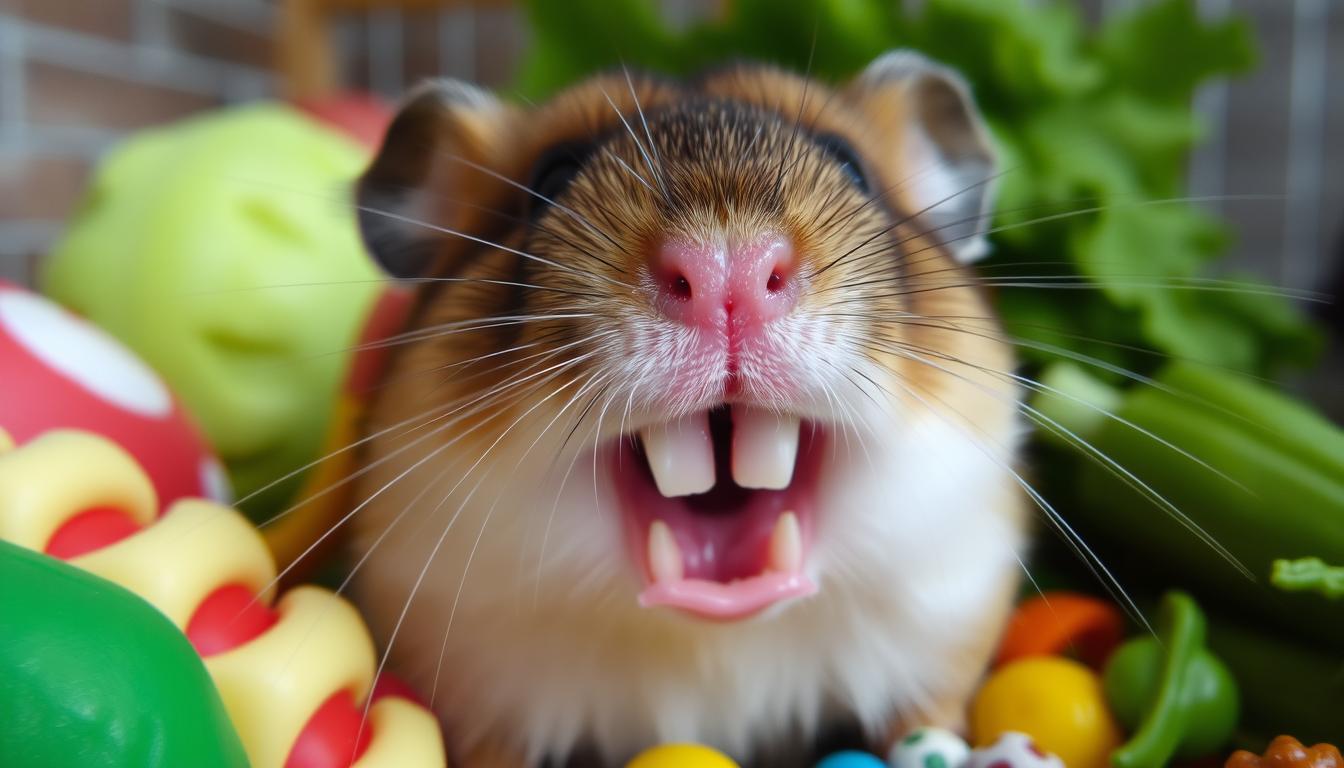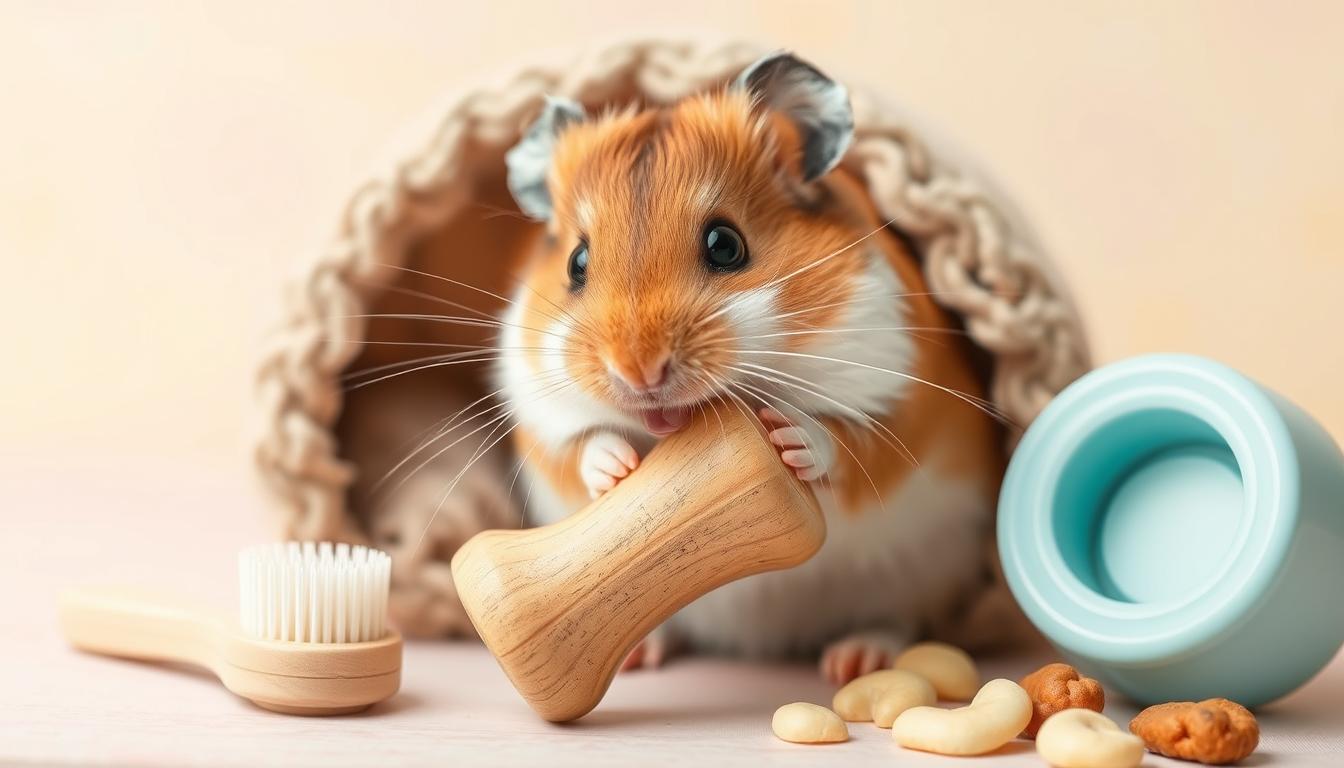Hamsters, those adorable balls of fluff and energy, are a delight to have as pets. But beyond the cute cheeks and endless wheel running, there’s a responsibility to ensure their well-being. One often-overlooked aspect of hamster care is nail maintenance. Yes, those tiny claws can actually become a problem if they grow too long! Just like humans, hamsters need their nails kept at a reasonable length for their comfort and health. This article will delve into why nail length matters, how to identify overgrown nails, safe trimming techniques, and preventative measures to keep your hamster’s paws happy and healthy. So, let’s get started on this journey to understanding the importance of hamster nail care!
Hamster Claws: Are Your Little Friend’s Nails Too Long?
Hamster claws, while small, serve a vital purpose. They help your furry friend grip surfaces, climb, and dig – all essential behaviors for a happy hamster. However, when these claws become excessively long, they can actually hinder these natural activities. Imagine trying to walk comfortably with shoes that are several sizes too big; that’s similar to what a hamster experiences with overgrown nails.
The ideal length for a hamster’s nails allows them to walk normally without their claws constantly catching on things. A healthy nail length also prevents them from accidentally scratching themselves too deeply during grooming. Think of it like this: a well-maintained set of claws contributes to a hamster’s overall comfort and ability to navigate their environment with ease.
So, how do you determine if your hamster’s nails are too long? Observe their gait. Are they walking normally, or do they seem to be struggling or walking awkwardly? Do you hear their nails clicking loudly against the bottom of their cage? These are telltale signs that it might be time for a nail trim.
Furthermore, a visual inspection is crucial. Gently hold your hamster (if they’re comfortable with being handled) and examine their paws. If the nails are curling significantly or appear to be excessively long compared to the size of their toes, they likely need trimming.
Remember, every hamster is different, and nail growth rates can vary. Regularly checking your hamster’s nails is the best way to stay on top of their nail care needs and prevent potential problems before they arise. Don’t wait until your hamster is visibly struggling; proactive care is key to their well-being.
Ultimately, maintaining a healthy nail length is an essential part of responsible hamster ownership. It contributes to their comfort, mobility, and overall quality of life. By being observant and taking appropriate action, you can ensure your little friend’s paws are always in tip-top shape.
Tiny Talons: Why Hamster Nail Length Actually Matters
The importance of hamster nail length often gets overlooked, but it plays a significant role in their overall well-being. Just like with any pet, neglecting nail care can lead to a host of problems that can negatively impact their quality of life. Think of it as similar to a human neglecting their own hygiene; small issues can quickly escalate into larger, more uncomfortable situations.
Long nails can drastically affect a hamster’s mobility. Imagine trying to navigate your home with shoes that are several sizes too big and have sharp, extended claws. This is precisely the challenge a hamster with overgrown nails faces. They can struggle to grip surfaces, making climbing and playing difficult. This can lead to frustration and a decrease in their natural activity levels.
Beyond mobility issues, overgrown nails can also pose a significant safety risk. Hamsters are naturally curious and love to explore their surroundings. However, long nails can easily get caught on bedding, toys, or cage bars. This can lead to painful injuries, such as torn nails, broken toes, or even more serious wounds if they panic and struggle to free themselves.
Furthermore, long nails can interfere with a hamster’s ability to groom themselves properly. Hamsters are meticulous groomers, and they rely on their paws to keep their fur clean and free of debris. Overgrown nails can make it difficult for them to reach certain areas, leading to matting and potential skin infections. This can cause discomfort and even affect their overall hygiene.
Another critical consideration is the potential for self-inflicted injuries. Hamsters often scratch themselves, especially when grooming or feeling itchy. If their nails are excessively long and sharp, they can accidentally cause deep scratches or cuts, which can become infected if not properly cared for. This can lead to pain, discomfort, and the need for veterinary intervention.
In essence, maintaining a healthy nail length is not just about aesthetics; it’s about ensuring your hamster’s comfort, safety, and overall well-being. By paying attention to their nail length and taking appropriate action when necessary, you can prevent a multitude of potential problems and help your furry friend live a happier, healthier life.
Long Nails: The Hidden Dangers for Your Hamster’s Health
While they may seem like a minor issue, overgrown hamster nails can actually pose several hidden dangers to your furry friend’s health. These dangers can range from simple discomfort to more serious medical conditions, highlighting the importance of regular nail maintenance. Think of it like ignoring a small leak in your roof; it may not seem like a big deal at first, but it can eventually lead to significant structural damage.
One of the primary dangers of long nails is the increased risk of injury. As mentioned earlier, overgrown nails can easily get caught on bedding, toys, or cage bars. This can lead to torn nails, which are incredibly painful for hamsters. A torn nail can also become infected, requiring veterinary treatment and potentially leading to further complications.
Another often-overlooked danger is the impact on a hamster’s gait and posture. When nails become excessively long, they can force the hamster to walk in an unnatural way, putting stress on their joints and muscles. Over time, this can lead to arthritis or other musculoskeletal problems, which can significantly reduce their mobility and quality of life.
Furthermore, long nails can create a breeding ground for bacteria and fungi. Dirt and debris can easily accumulate under the nails, creating a moist and warm environment that is ideal for microbial growth. This can lead to nail infections, which can be difficult to treat and can spread to other parts of the body.
In addition to the physical dangers, long nails can also contribute to behavioral problems. A hamster that is constantly experiencing discomfort or pain due to overgrown nails may become irritable, withdrawn, or even aggressive. They may be less likely to play, explore, or interact with their owners, leading to a decrease in their overall quality of life.
Finally, in severe cases, overgrown nails can even lead to secondary infections. If a hamster is constantly scratching at their nails or paws due to discomfort, they can create open wounds that are susceptible to bacterial invasion. These infections can spread rapidly and can even become life-threatening if not treated promptly. Therefore, keeping your hamster’s nails trimmed is crucial for preventing a cascade of potential health problems.
Ouch! How Overgrown Nails Can Hurt Your Hamster Pal
Imagine walking around all day with shoes that are too tight and constantly pinching your toes. That’s a similar sensation to what a hamster experiences when their nails are overgrown. The discomfort and pain associated with long nails can significantly impact their well-being and overall quality of life. It’s not just a cosmetic issue; it’s a matter of their physical comfort.
Overgrown nails can cause direct physical pain. When the nails become excessively long, they can curl under and dig into the hamster’s paw pads. This can create pressure and irritation, causing pain with every step they take. Imagine having a pebble stuck in your shoe all day; that constant pressure can be incredibly uncomfortable and even debilitating.
Beyond the direct pain, overgrown nails can also lead to secondary injuries that cause further discomfort. As mentioned earlier, long nails are more likely to get caught on things, leading to torn nails, broken toes, or even more serious wounds. These injuries can be incredibly painful and can take a long time to heal.
Furthermore, the discomfort associated with overgrown nails can affect a hamster’s behavior. A hamster in pain may become less active, less playful, and more irritable. They may be less likely to groom themselves properly, leading to matting and skin irritation. They may also become more withdrawn and less likely to interact with their owners.
The constant discomfort can also lead to stress, which can have a negative impact on their immune system. A stressed hamster is more susceptible to illness and disease. Chronic stress can also shorten their lifespan and reduce their overall quality of life.
In addition to the physical and behavioral effects, the pain associated with overgrown nails can also make it difficult for a hamster to perform essential activities, such as eating and drinking. If they are in too much pain to move around comfortably, they may be less likely to access their food and water, leading to malnutrition and dehydration. Therefore, addressing overgrown nails is not just about preventing injury; it’s about ensuring your hamster can live a comfortable and fulfilling life.
Hamster Nail Check: Signs Your Furry Friend Needs a Trim
Knowing when your hamster needs a nail trim is crucial for their comfort and well-being. Regularly checking their nails and being aware of the telltale signs of overgrowth can help you prevent potential problems before they arise. Think of it like regularly checking the oil in your car; it’s a simple preventative measure that can save you from costly repairs down the road.
One of the most obvious signs that your hamster needs a nail trim is the sound of their nails clicking against the bottom of their cage. If you hear a distinct clicking sound as they walk around, it’s a clear indication that their nails are too long and are making contact with the hard surface.
Another sign to look out for is changes in their gait. If you notice that your hamster is walking awkwardly, limping


